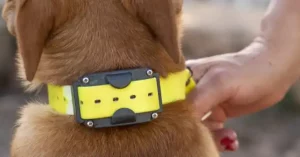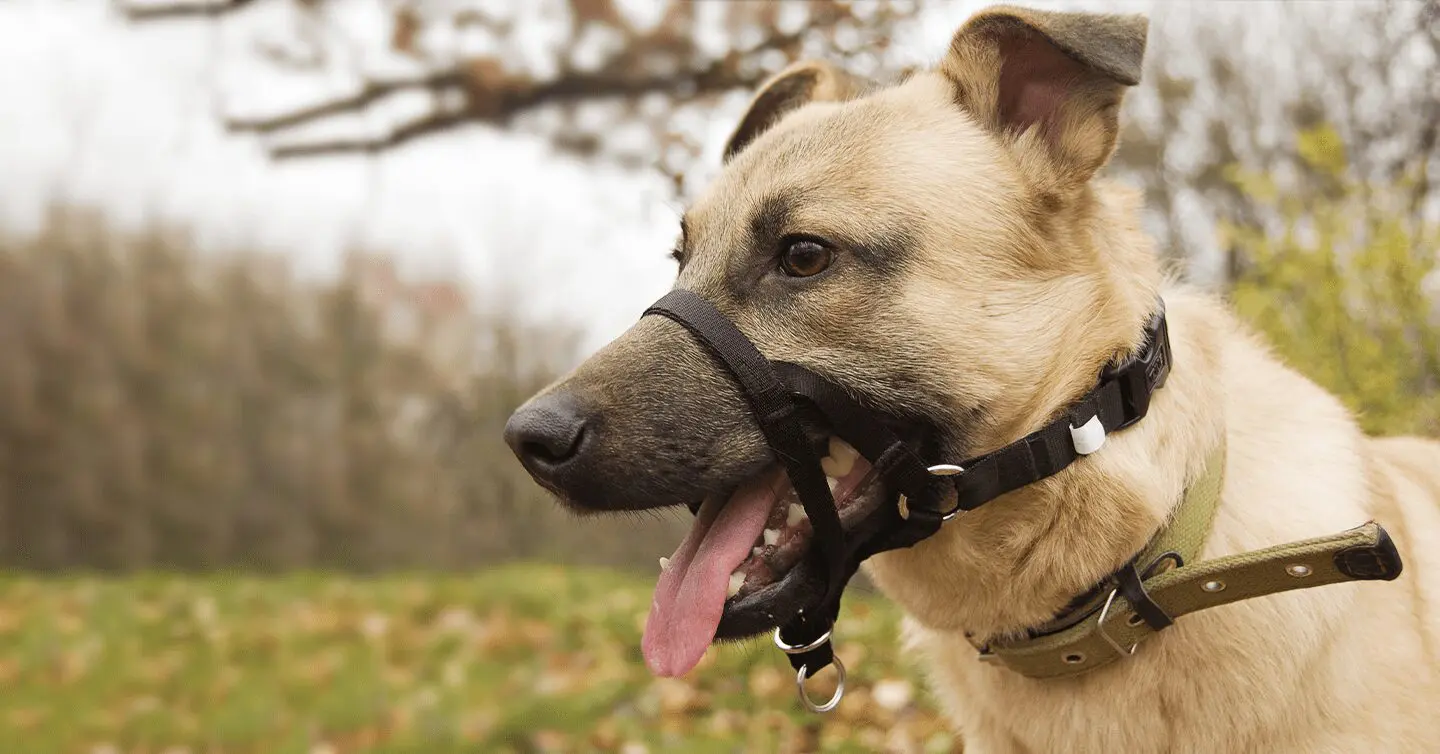Training collars are tools used by pet parents and professional dog trainers to modify a dog’s behavior through the use of various forms of stimulation. These collars come in a wide variety of types and styles, each with its unique set of features and benefits. From traditional flat collars to electronic collars with remote controls, there is an option for every dog and training need. In this article, we’ll explore the different types of training collars and discuss their effectiveness as an excellent option for behavior modification.
Types of Training Collars for Dogs
Training collars are an excellent option for pet parents who want to correct their dogs’ undesired behaviors. These collars come in a wide variety of types, each designed to meet specific training needs. In this article, we’ll look at some of the most common types of training collars for dogs, their features, and how they work. From traditional collars to electronic training collars, we’ll explore the various options available and their effectiveness in modifying behavior. Read on to select the ideal dog training collar that works best for your furry friend!

Bark Collar
Barking is a natural behavior for dogs, but excessive barking can be a nuisance to neighbors and pet parents. To address this issue, pet owners have turned to bark collars as a training tool. In this article, we’ll discuss the purpose and use of bark collars for dogs, how they work, the different types available on the market, as well as their pros and cons. We’ll also provide considerations to keep in mind when selecting and using a bark collar for your furry friend.
Bark collars are designed to discourage excessive barking in dogs. They emit a sound, vibration, or corrective stimulus to interrupt the barking behavior. The idea is not to punish your dog for barking, but rather to train them to understand when barking is and isn’t appropriate.
Remote Control Training Collar
The Remote Control Training Collar is a unique type of training collar that allows pet parents to monitor and control their dog’s behavior during outdoor activities and obedience training. This collar typically includes a remote control with a wide range of features such as stimulation levels and static shock settings that you can use to train your dog effectively.
The Remote Control Training Collar is one of the most sought-after training collars in the market due to its exceptional features. With this collar, you can control your pet’s behavior, correct problematic behaviors like jumping and barking and reinforce positive behaviors. The remote control has a long-range, allowing you to manage your dog’s behavior from a distance during outdoor activities.
The collar typically uses electric shocks as a corrective measure, with adjustable stimulation levels to ensure its safe use for your dog. However, it’s important to note that the Remote Control Training Collar is meant to be used safely under the guidance of a professional trainer to avoid harming your furry friend.
Head Collar
If you’re a pet owner struggling with the challenges of leash control during walks, you may want to consider using a head collar for dog training. This type of collar is designed to fit around your dog’s head and muzzle, providing gentle control over their movements without causing any discomfort or pain.
One of the most significant benefits of a head collar is its ability to prevent pulling on the leash during walks. By offering more control over your dog’s head and neck, you can keep them focused and prevent them from pulling too hard on the leash. This makes daily walks more enjoyable for both pet parents and their furry companions.
Head collars are also an excellent option for obedience training. Using this gentle training tool, you can guide your dog through training exercises and reinforce positive behavior. With time and practice, your pet will become more attentive, well-behaved, and obedient.
Head collars are particularly recommended for breeds that have a strong prey drive, are prone to lunging, or have difficulty controlling their excitement. By using a head collar, pet owners can more easily control their dogs’ movements and manage their behavior during high-energy activities like outdoor playtime.
Finally, head collars are easy to use and offer a non-invasive training option for pet parents. With no need for electric stimulation or prong-like collars, head collars provide an effective training solution without causing harm or discomfort to your furry friend.
Martingale Collar
The Martingale collar is specifically designed for dogs with small heads, including sighthounds like Greyhounds and Whippets. Unlike standard collars, the Martingale collar is made up of two loops that work together to keep your furry friend safe and secure.
The larger loop of the Martingale collar sits comfortably around the dog’s neck, while the second, smaller loop tightens when the leash is pulled. This prevents the dog from slipping out of the collar and gives pet parents added peace of mind during walks and outdoor activities.
One important thing to keep in mind when using a Martingale collar is that it should sit high on the dog’s neck, just behind the ears. This ensures that the collar functions properly and that your dog is comfortable while wearing it.
Martingale collars are a popular choice for professional dog trainers who use positive reinforcement methods. These collars provide a gentle yet effective training tool that can help reinforce positive behaviors and reduce negative behaviors.
Prong Collar
Prong collars, also known as pinch collars, have been around for over a century and were originally designed for use in dog obedience training. The prongs on the collar are designed to pinch the dog’s skin when pressure is applied, mimicking the bite of a mother dog. This is meant to communicate to the dog that they are exhibiting unwanted behavior.
Despite their controversial reputation, prong collars can be effective training tools when used properly and on the right kind of dog. They are often recommended for larger, more powerful breeds who may be difficult to control on a standard flat collar.
However, there are many misconceptions about prong collars, including the idea that they are cruel or harmful to dogs. When used correctly, a prong collar should never cause pain or injury to a dog. It should fit snugly, with the prongs resting gently against the skin rather than digging in.
It’s important to note that prong collars are not suitable for all dogs. They should never be used on puppies or small breeds and should be avoided for dogs with respiratory issues or neck injuries. Additionally, prong collars should always be used under the guidance of a professional dog trainer, as improper use can lead to further behavior problems and even harm to the dog.
Benefits of Using a Training Collar for Dogs
Training collars for dogs are an effective way to modify negative behaviors and encourage positive ones. They are an excellent option for pet parents who want to improve their dog’s obedience, especially for those who enjoy outdoor activities and need their dogs to behave on and off the leash. In this article, we will discuss the benefits of using a training collar for dogs and offer insights on choosing the right type of collar and using it safely and effectively.

Unwanted Behavior Reduction
If you are a pet parent who’s struggling with bad behavior in your canine companion, training collars can be an effective solution. They help modify undesirable behavior in dogs by providing an additional tool to control and communicate with your pet.
Training collars, such as electronic and martingale collars, can be used to address a wide range of unwanted behaviors. These may include excessive barking, jumping on people, pulling on the leash, and more. For example, a bark collar can help reduce excessive barking, while a head collar can prevent jumping and a prong collar can discourage pulling on the leash.
When using training collars, it’s important to combine them with positive reinforcement training techniques and behavior modification. Positive reinforcement involves rewarding your dog’s good behavior with treats, praise, and attention. Behavior modification, on the other hand, involves identifying the root cause of your dog’s bad behavior and addressing it through training.
Positive Reinforcement of Good Behaviors
Training collars can be a powerful tool for pet parents to reinforce positive behaviors in their dogs. Positive reinforcement is a training technique that involves rewarding desired behaviors to encourage their repetition. This approach has proven to be highly effective and has gained popularity because it is a humane and gentle way to train dogs.
Training collars with a wide range of features can help pet parents achieve the desired outcomes. For example, waterproof collars are perfect for outdoor activities and can withstand rain or splashing around in the water. Remote controls allow pet parents to reward positive behaviors from a distance, reinforcing the positive association with the action. The range of stimulation levels enables pet parents to adjust the intensity of the stimulus, making it appropriate for their dog’s age, size, breed, and temperament.
This approach helps pet parents avoid using negative reinforcement and punishment, which can be stressful for dogs and undermine the bonding process between pet parents and their canine companions. Positive reinforcement is a more effective and humane way to address undesirable behaviors in dogs, providing clear instructions on what is expected of them.
Outdoor Activity Improvement
For pet parents who love going on outdoor adventures with their furry friends, training collars can be a game-changer. With the help of various types of collars, such as the waterproof collar and remote control training collar, pet parents can ensure their dogs’ safety and prevent undesired behaviors that may arise during outdoor activities.
A waterproof collar is an ideal option for dogs who love splashing around in the water or getting caught in the rain. This type of collar is designed to withstand water and other moisture, preventing it from getting damaged or causing discomfort to the dog. With a waterproof collar, pet parents can have peace of mind knowing that their dog is comfortable and safe during water activities.
On the other hand, a remote control training collar can provide pet parents with more control over their dog’s behavior during outdoor activities. With this type of collar, pet parents can reward positive behaviors and discourage undesired behaviors from a distance. For example, if a dog tends to chase after other animals while on a hike, the remote control training collar can be used to discourage this behavior and encourage the dog to stay close to its owner.
Affordable Options Available to Pet Parents
Pet parents who are looking for an effective training collar for their dogs but are on a tight budget need not worry since there is a wide variety of affordable options available in the market. The most budget-friendly option is the traditional and standard flat collar. Although it does not have any specific features for behavior modification, it can serve as a basic identification collar.
However, for pet parents who want to modify their dog’s undesirable behaviors, the training collar’s cost may increase. The good news is that there are still affordable training collars that can help achieve behavior modifications. One of the most recommended affordable options is the remote control training collar. It allows pet parents to have more control over their dog’s behavior and comes in a wide range of features and stimulation levels. It can be particularly useful for dogs that tend to run off during outdoor activities.
Conclusion
In conclusion, training collars for dogs have become an increasingly popular tool for pet parents looking to modify their dog’s undesirable behaviors. From remote control training collars, and bark collars, to head collars and martingale collars, there are a wide variety of options available on the market.



